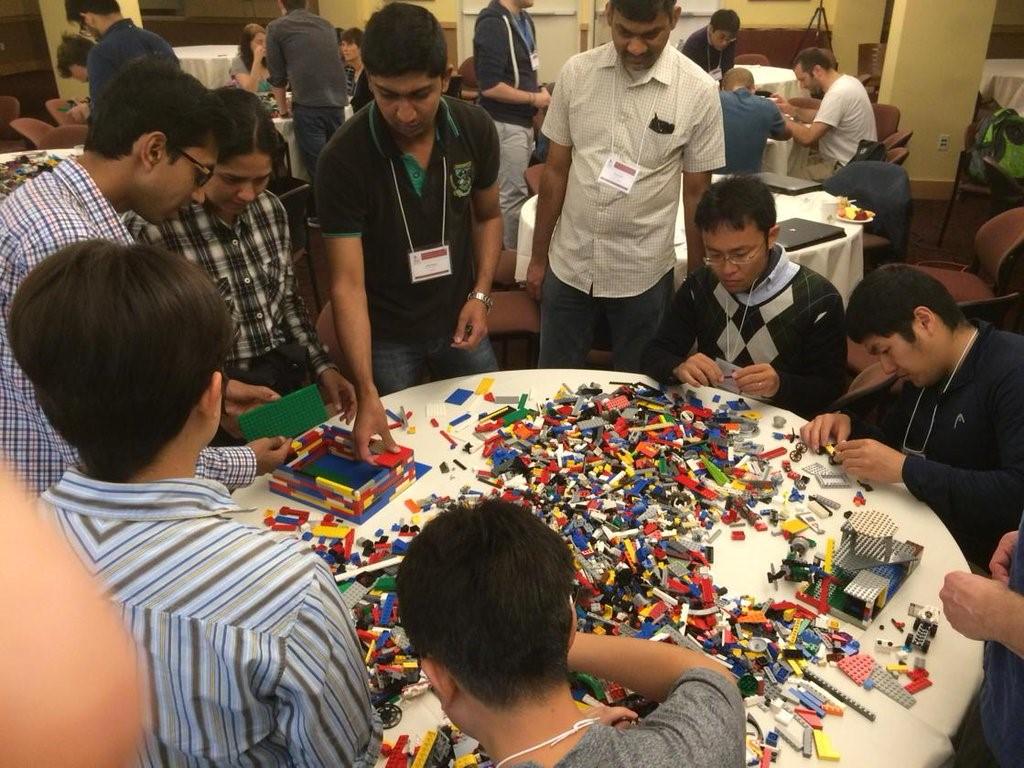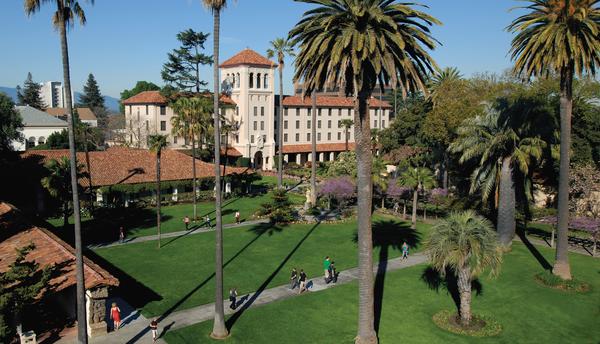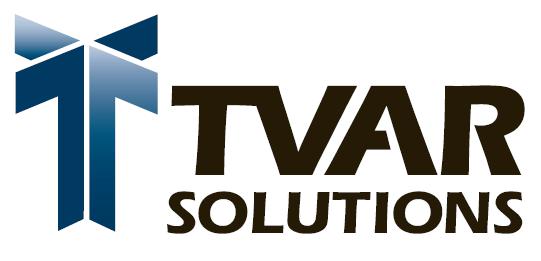2017 Conference
2017 Program
Tutorial, Monday, May 15th
9:00am — 5:00pm
(Breakfast 7:30 — 9:00, Lunch 12:30 — 1:30)
Instructors: Sean Roberts (bio) and Stefano Maffulli (bio)
(Breakfast 7:30 — 9:00, Lunch 12:30 — 1:30)
Instructors: Sean Roberts (bio) and Stefano Maffulli (bio)
With over 2000 developers from 130 different companies worldwide, OpenStack is one of the largest collaborative software-development projects. Because of its size, it is characterized by a huge diversity in social norms and technical conventions. These can significantly slow down the speed at which changes by newcomers are integrated in the open source project.


We've designed a training program to accelerate the speed at which new developers are successful at integrating their own roadmap into that of the open source project. We have taken a slice of an existing successful two-day training program and broken out the session dealing with development interaction. This seven-hour live class teaches students to navigate the intricacies of a project's technical teams and social interactions using Legos. It is a lot of fun and very informative to the way upstream development teams, companies, and individual technical contributors behave and react to milestones. For more background, read:
Invited Track, Tuesday, May 16th
7:30 — 8:30 Registration / Breakfast
Emerging Open Source Storage System Design for Hyperscale Computing
David Bonnie, Los Alamos National Laboratory (bio)
With MarFS in production at LANL since fall 2016, we have gained new insights, learned lessons, and expanded our future plans. We'll discuss the various hurdles required to deploy such an ambitious system with minimal manpower. Further, we'll delve into the challenges, triumphs, and defeats on the road to a new tier of inexpensive scalable storage.
Peter Braam, Campaign Storage, LLC (bio)
Economic considerations and technology developments are necessitating widely usable tiered storage. Untroubled by the worries of transparency and performance, Campaign Storage—invented at Los Alamos National Laboratory—offers radical revisions of old workflows and adapts to new technologies. But it also leverages widely available technologies and interfaces to offer stability from the ground up and blend in with the past. We'll discuss how a simple combination of components can support scalability, data analytics and efficient integration with memory based storage.
Limits of Hard Drives for Long-Term Storage
Andrew Klein, , Backblaze (bio)
For the last four years, Backblaze has collected and reported on the failure rates and SMART stats of the hard drives in use in our data centers. Currently we have over 80,000 drives ranging from 3 to 8TB. Let's take a look at what we learned over the years about hard drives, including failure rates, by model, and the ability to predict drive failure before it happens.
12:30 — 1:30 Lunch
(Linda Kempster video)
Leveraging Compression, Encryption, and Erasure Coding Chip
Hardware Support to Construct Extreme-Scale Storage Systems
Hardware Support to Construct Extreme-Scale Storage Systems
Stephen Phillips, Oracle SPARC (bio)
On August 12, 2014, Oracle announced the SPARC M7 processor, highlighting an architecture advancement the company refers to as "Software in Silicon". Putting software onto the computer chip (Software in Silicon) is a revolutionary new technology which fundamentally changes the way computer systems are built in the future. Oracle processor engineers worked closely with Oracle's software developers, in particular its database experts, in hard-wiring capabilities specific to application processes and performance onto the processor—hence the "Software in Silicon" moniker.
Greg Tucker, Intel
As distributed storage adds advanced features such as erasure coding, dedup, compression and encryption, the computational requirements can limit performance. ISA-L is an optimized software library for storage algorithms intended to maximize efficiency by targeting the highest cycle-per-byte functions in modern storage systems.
Per Simonsen, Memoscale (bio)
Library optimizations as well as development of new erasure coding algorithms have been keys to unlocking higher levels of erasure coding performance. Learn about performance improvements achieved on ARM and x86 processors.
Panel — The Limits of Open Source in Extreme-Scale Storage Systems Design
(Video)
Peter Braam, Campaign Storage, LLC (bio)
Matthew O'Keefe, Oracle (bio)
Sean Roberts, OpenStack Consortium (bio)
Michael Declerck, Oracle
Building Extreme-Scale SQL and NoSQL Processing Environments
The Benefits of Hardware-Software Co-Design/Convergence for Large-Scale Enterprise Workloads
Michael Palmeter, Oracle
Matthew O'Keefe, Oracle (bio)
SQL is the language for data in business and many science applications
today. In this talk, we will outline Oracle’s Exadata design and architecture and
how it achieves very high performance, capacity, and resilience in production.
Aaron Cordova, Koverse (bio)
NoSQL databases make some strong assertions about reasons for deviating from the conventional relational model. In this talk Aaron Cordova will present the design decisions and trade-offs made in building Apache Accumulo, a highly scalable open source implementation of Google's BigTable and will discuss how these decisions have enabled Accumulo to achieve extreme scalability in several dimensions.
Short Talks
Attendees and vendors can sign up in advance, or at the conference, to give 5-15 minute
works-in-progress or summary updates on work of interest to conference attendees.
works-in-progress or summary updates on work of interest to conference attendees.
John Kaitschuck, Seagate
Donna Harland, Oracle Optimized Solutions
Donna Shawhan, Oracle StorageTek Archive Solutions
Donna Shawhan, Oracle StorageTek Archive Solutions
Discover how to easily design and manage your large archives for the long term. This short talk will highlight the key components and features that are essential for a secure, future-proof long-lived archive. Understand how to leverage and scale the optimal mix of storage, ranging from flash to disk to tape to cloud. Get tips on how to architect an environment that provides you easy access to and infinite retention for your data, no matter where it is stored or how old.
Igor Sfiligoi, General Atomics
Invited Track, Wednesday May 17th
7:30 — 8:30 Breakfast
(Day Two Intro Video)
Keynote
Dr. Kimberly Keeton, Hewlett Packard Enterprise (bio)
Data growth and data analytics requirements are outpacing the compute and storage technologies that have provided the foundation of processor-driven architectures for the last five decades. This divergence requires a deep rethinking of how we build systems, and points towards a memory-driven architecture, where memory is the key resource and everything else, including processing, revolves around it.
Memory-driven computing (MDC) brings together byte-addressable persistent memory, a fast memory fabric, task-specific processing, and a new software stack to address these data growth and analysis challenges. At Hewlett Packard Labs, we are exploring MDC hardware and software design through The Machine. This talk will review the trends that motivate MDC, illustrate how MDC benefits applications, provide highlights from our Machine-related work in data management and programming models, and outline challenges that MDC presents for the storage community.
Memory-driven computing (MDC) brings together byte-addressable persistent memory, a fast memory fabric, task-specific processing, and a new software stack to address these data growth and analysis challenges. At Hewlett Packard Labs, we are exploring MDC hardware and software design through The Machine. This talk will review the trends that motivate MDC, illustrate how MDC benefits applications, provide highlights from our Machine-related work in data management and programming models, and outline challenges that MDC presents for the storage community.
Storage Innovation in Extreme-Scale HPC Data Centers
Glenn K. Lockwood, NERSC
Ellen Salmon, NASA (bio)
This talk will describe recent developments at the NASA Center for Climate Simulation, which is funded by NASA’s Science Mission Directorate, and supports the specialized data storage and computational needs of weather, ocean, and climate researchers, as well as astrophysicists, heliophysicists, and planetary scientists. To meet requirements for higher-resolution, higher-fidelity simulations, the NCCS augments its High Performance Computing (HPC) and storage/retrieval environment. As the petabytes of model and observational data grow, the NCCS is broadening data services offerings and deploying and expanding virtualization resources for high performance analytics.
Dr. Michal Simon, CERN (bio)
The storage group in CERN’s IT department provides coherent storage services for the physics community at CERN, including the the experiments at the Large Hadron Collider. In this talk we give a status update on the storage technologies, workloads, and storage analytics at CERN. Moreover, we will discuss the strategic developments like a new archive backend for our EOS disk pools, a RAFT based implementation of EOS namespace and latest security enhancements to our data access protocol (xroot).
Panel — How Extreme-Scale HPC Data Centers Can Leverage Public Cloud for
Computing and Storage
Computing and Storage
(Video)
Ellen Salmon, NASA
Dr. Michal Simon, CERN
Supporting Extreme-Scale Name Spaces with NAS Technology
Jason Schaffer, Oracle
Improving Network Attached Storage
(Slides)
Jim Finlayson, Department of Defense
Scaling NAS filer technology to extreme-scale requires a mix of hardware and software as well as intelligent system design. In this talk, we outline one approach to scaling NAS name spaces.
Lightning-fast File Operations for Extreme Scale Name Spaces:
Techniques for Applying Structure to Unstructured Data
Techniques for Applying Structure to Unstructured Data
Mitch Crane, Cloudtenna
Mitch will illustrate the power of separating content and metadata. When metadata is extracted into a database, the index powers web-scale file access, search, and audit in ways not before possible.
12:30 — 1:30 Lunch
Storage System Designs Leveraging Hardware Support
David Bonnie, Los Alamos National Laboratory (bio)
Storage systems continue to demand the seemingly impossible triad: faster, cheaper, and more reliable. As systems scale up, all three become increasingly hard to balance, with reliability generally taking the back seat. While flat protection schemas work well for small systems, they all compromise too much of the triad at the tens to hundreds of petabyte scale. This discussion will focus on the genesis of the tiered erasure system used in MarFS and how it leverages hardware accelerated erasure to implement a fast, safe, and efficient storage paradigm.
Greg Tucker, Intel
Ceph is an open-source, unified, distributed storage system designed with scale in mind. Ceph's performance doesn't suffer as your data storage grows, which makes it a good fit for Big Data projects. Ceph community has recently been focused on adding key enterprise features such as erasure coding, compression and encryption. In this presentation, we’ll talk about how Intel QuickAssist and ISA-L based offloads can help accelerate these functions in Ceph.
How Can Extreme-Scale Storage Systems Support Containerization?
Unsolved Storage Issues in Linux Container Interfaces
(Video)
Dr. James Bottomley, IBM (bio)
With the addition of the superblock namespace (essentially a user namespace for the kernel to filesystem boundary) much of the stage is now set for fixing one of the biggest underlying container problems: that of translating unprivileged container writes into real filesystem uid/gids. This talk will examine how this system works, why it is necessary and what solutions have been proposed so far, how the upstream discussions are going and what still need to be added for orchestration systems to make use of it.
Evan Powell, Entrepreneur and Hacker (bio)
What is so new about the container environment that a new class of storage software is emerging to address these use cases? And can container orchestration systems themselves be part of the solution? As is often the case in storage, metadata matters here. We are implementing in the open source OpenEBS.io some approaches that are in some regards inspired by ZFS to enable much more efficient scale out block storage for containers that itself is containerized. The goal is to enable storage to be treated in many regards as just another application while, of course, also providing storage services to stateful applications in the environment.
Scott Sinno, NASA (bio)
This presentation will describe the evolution and growth of the NCCS's flagship virtualization project known as "ADAPT". The ADAPT system is a KVM/QEMU-based virtualized environment hosting 11 PB of highly cost-effective disk-storage in the form of JBODS, heavily leveraging Linux's "mdadm" software-based RAID for data-integrity and reliability. The ADAPT environment enforces a true zoned architecture, such that nodes within a zone have no visibility whatsoever to network or storage resources in other zones. This is accomplished by providing each zone it's own distinct set of virtualized fileservers which access their media as logical block devices presented by their hypervisors.
Trends in Non-Volatile Media
Luc Thomas, Headway (bio)
Spin-Transfer-Torque Magnetic Random Access Memory (STT-MRAM) is emerging as a leading candidate for a variety of embedded memory applications ranging from embedded NVM to working memory and last level cache. In this talk, we will discuss the basic principles of STT-MRAM, as well as recent advances that bring perpendicular STT-MRAM closer to mass production. We will also address the specific challenges facing STT-MRAM for standalone and embedded applications, and its place in the emerging NVM landscape.
Andy Rudoff, Intel (bio)
In this presentation, Andy will report on the latest developments around persistent memory programming. He’ll describing current discussions in the SNIA NVM Programming Technical Work Group, the current state of operating system support, recent tool and library development, and finally he’ll describe some of the upcoming challenges for high performance persistent memory use.
NOVA: A High-Performance, Hardened File System for Non-Volatile Main Memories
(Slides)
Dr. Steven Swanson, University of California, San Diego (bio)
Fast non-volatile memories (NVMs) will soon usher in a new era of high-performance storage. Managing, protecting, accessing, and maintaining consistency for data stored in NVM file systems raises a host of challenges that neither conventional block-oriented file systems nor existing NVM file systems address. I will describe NOVA, an open-source file system that provides the higher performance, better reliability, and stronger consistency than any available NVMM file system. NOVA adapts conventional log-structured file system techniques to exploit the fast random access that NVM provides. It uses per-file logs to provide fast, atomic file operations, uses checksums and ECC to protect data and metadata from media errors and software bugs, and leverages DRAM to to maximize performance. Experimental results show that in write-intensive workloads, NOVA provides 22% to 216x throughput improvement compared to state-of-the-art file systems, and 3.1x to 13.5x improvement compared to file systems that provide equally strong data consistency guarantees.
Short Talks
Attendees and vendors can sign up in advance, or at the conference, to give 5-15 minute
works-in-progress or summary updates on work of interest to conference attendees.
works-in-progress or summary updates on work of interest to conference attendees.
A Sideband Database for HPC and Archival Storage Systems Supporting Billions of Files
Jacob Farmer, Starfish
6:00 — 8:00 Reception
Research Track, Thursday, May 18th
(* Indicates Presenter)
7:30 — 8:30 Registration / Breakfast
8:30 — 10:30 Deduplication
(session chair: Yu Hua, Yu Hua, Huazhong University of Science & Technology)
Fred Douglis, Andrew Huber, Donna Lewis* and Rachel Traylor, Dell EMC
HPDedup: A Hybrid Prioritized Data Deduplication Mechanism for Primary Storage in the Cloud
Huijun Wu* and Sherif Sakr, The University of New South Wales, Australia
Chen Wang and Liming Zhu, Data61, CSIRO, Australia
Yinjin Fu, PLA University of Science and Technology, China
Kai Lu, National University of Defense Technology, China
A Cost-efficient Rewriting Scheme to Improve Restore Performance in Deduplication Systems
Jie Wu*, Yu Hua, Pengfei Zuo and Yuanyuan Sun, Huazhong university of Science and Technology, China
Yujuan Tan*, Jian Wen and Baiping Wang, Chongqing University, China
Zhichao Yan and Hong Jiang, University of Texas at Arlington
Witawas Srisa-An, University of Nebraska, Lincoln
Hao Luo, Nimble Storage
11:00 — 12:00 KV Stores
(session chair: Aleatha Parker-Wood, Symantec)
A Light-weight Compaction Tree to Reduce I/O Amplification toward Efficient Key Value Stores
Ting Yao*, Jiguang Wan, Qingxin Gui, Fei Wu and Changsheng Xie, Huazhong University of Science and Technology, China
Ping Huang and Xubin He, Temple University
Shenglong Li*, Quanlu Zhang, Zhi Yang and Yafei Dai, Peking University, China
12:00 — 1:00 Lunch
1:00 — 2:30 Caching
(session chair: Avani Wildani, Emory University)
Dong-Yun Lee*, Kisik Jeong, Sang-Hoon Han, and Jin-Soo Kim, SungKyunKwan University, South Korea
Joo-Young Hwang and Sangyeun Cho, Samsung Electronics Co., Ltd., South Korea
FRD: A Filtering based Buffer Cache Algorithm that Considers both Frequency and Reuse Distance
Sejin Park*, SK Telecom, South Korea
Chanik Park, POSTECH, South Korea
Ziqi Fan*, Fenggang Wu, Jim Diehl and David Du, University of Minnesota
Dongchul Park, Intel Corporation
Doug Voigt, Hewlett Packard Enterprise
3:00 — 5:00 Short Papers
(session chair: Peter Desnoyers, Northeastern University)
Peter Braam*, Campaign Storage (bio)
David Bonnie, Los Alamos National Laboratory (bio)
Peter Macko*, Xiongzi Ge, James Kelley, David Slik, Keith A. Smith and Maxim G. Smith, NetApp, Inc.
John Haskins Jr., Qualcomm
DsDs: Data Store Driven Scheduling of Applications For Energy and Perfromant Efficient Micro-Clouds System
Frezewd Lemma Tena and Christof Fetzer*, Technical University of Dresden, Germany
Bo Mao*, Suzhen Wu, Xiao Chen and Weijian Yang, Xiamen University, China
Hong Jiang, University of Texas at Arlington
Research Track, Friday, May 19th
(* Indicates Presenter)
7:30 — 8:30 Breakfast
8:30 — 10:00 Flash I
(session chair: Gala Yagdar, Technion)
Yajuan Du*, Huazhong University of Science and Technology and City University of Hong Kong
Deqing Zou and Hai Jin, Huazhong University of Science and Technology
Qiao Li and Liang Shi, Chongqing University
Chun Jason Xue, City University of Hong Kong
LX-SSD: Enhancing the Lifespan of NAND Flash-based Memory via Recycling Invalid Pages
Ke Zhou, Shaofu Hu* and Yuhong Zhao, Huazhong University of Science and Technology, China
Ping Huang, Huazhong University of Science and Technology and Temple University
Larger, Cheaper, but Faster: SSD-SWD Hybrid Storage Boosted by a New SMR-oriented Cache Framework
Chunling Wang*, Dandan Wang, Yunpeng Chai, Chuanwen Wang and Diansen Sun, Renmin University of China
10:30 — 12:00 Flash II
session chair: Carlos Maltzahn, University of California, Santa Cruz
Qingyue Liu* and Peter Varman, Rice University
Gala Yadgar and Roman Shor*, Technion, Israel
Mansour Shafaei* and Peter Desnoyers, Northeastern University
12:00 — 1:00 Lunch
1:00 — 2:00 New Memories I
(session chair: Jim Hughes, Apple)
Peiquan Jin, Zhangling Wu, Xiaoliang Wang, Xingjun Hao*, and Lihua Yue,
University of Science & Technology of China and Chinese Academy of Sciences
University of Science & Technology of China and Chinese Academy of Sciences
Pengfei Zuo* and Yu Hua, Huazhong University of Science and Technology
2:15 — 3:15 New Memories II
(session chair: Jim Hughes, Apple)
Hyeokjun Choe*, Seil Lee, Hyunha Nam, Seongsik Park, Seijoon Kim and Sungroh Yoon, Seoul National University, South Korea
Eui-Young Chung, Yonsei University, South Korea
Qiumin Xu* and Murali Annavaram, University of Southern California
Manu Awasthi, IIT Gandhinagar, India
Krishna Malladi and Jingpei Yang, Samsung Semiconductor, Inc.
Janki Bhimani, Northeastern University
3:30 — 4:30 Short Papers
session chair: Xing Lin, NetApp
Sosuke Matsui*, Tsuyoshi Miyamura, Noriko Tanemura, Terue Watanabe and Norie Iwasaki, IBM Japan
Mohammad Chowdhury* and Raju Rangaswami, Florida International University
2017 Organizers |
|
| Conference Chair | Dr. Sam Coleman |
| Tutorial Chair | Sean Roberts |
| Program Chair | Dr. Matthew O'Keefe |
| Research General Chair | Dr. Ahmed Amer |
| Research Program Chairs | Dr. Thomas Schwarz Dr. Aleatha Parker-Wood |
| Research Track Program Committee | |
| SCU Arrangements | Dr. Ahmed Amer |
| Industry Chair | Dr. James Reaney |
| Communications Chair | Meghan Wingate McClelland |
| Registration Chairs | Dr. JoAnne Holliday, Yi Fang |
| Page Updated January 12, 2024 |




